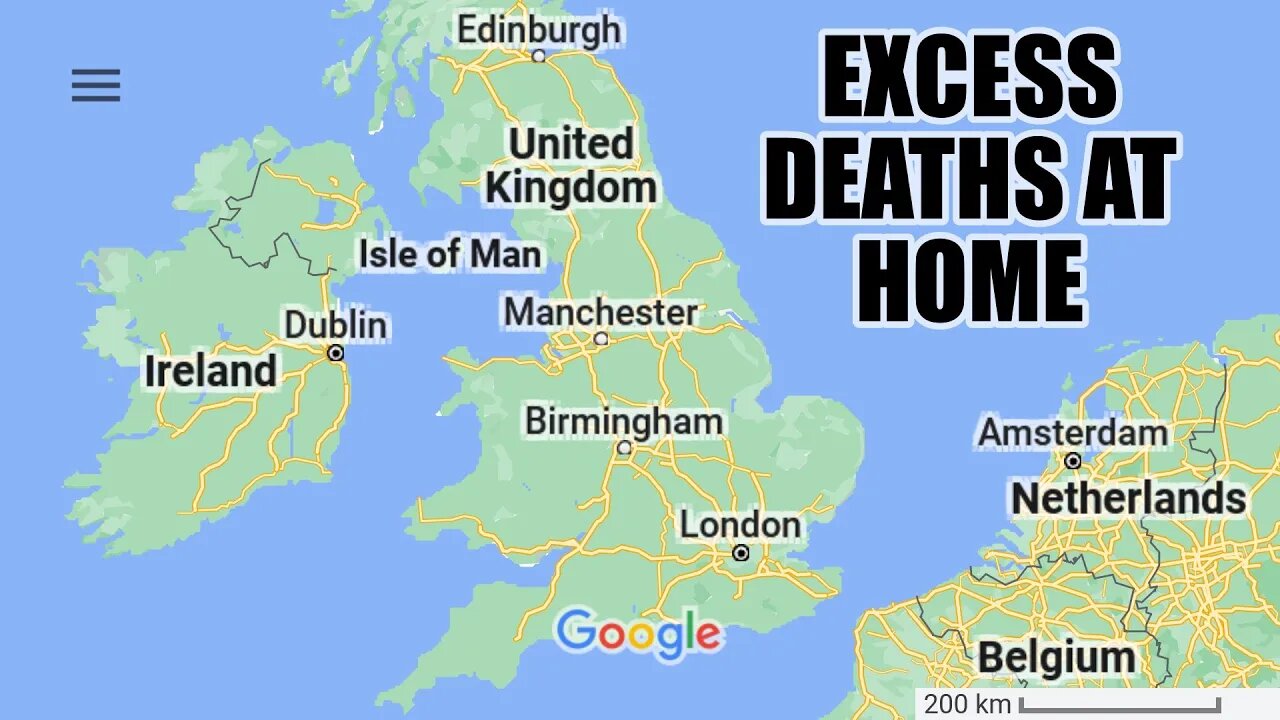Premium Only Content

Increased Excess Deaths at Home (England, Wales 2022)
In this video, we’ll take a look at excess deaths data coming out of England and Wales with a focus on where the deaths occurred, for example, in the home or at hospital, with some interesting results. This is the Office for National Statistics website. We’ll click on “Get the latest data and analysis on COVID in the UK”. If we scroll down to the “Spotlight” section, the data we’re interested in is “Deaths registered weekly in England and Wales, provisional: week ending 2 December 2022”. On this page, scroll down to the table of contents. What we’re interested in is Section 3: Deaths Data. In that section, we want to click on Deaths registered weekly in England and Wales, provisional. On this page, if we scroll down to the 2022 edition of this dataset, we can download the spreadsheet there.
This is Sheet 1 of the data which shows the Total deaths in England and Wales over most of 2022. It also shows the five-year average which we can use to calculate the number of excess deaths. If we plot that data on a graph, we can see there have been significant excess deaths throughout 2022. In the first 10-12 weeks of the year, there were actually significantly less deaths than expected, but from about March/April onwards, deaths have steadily been above what one would expect with thousands of excess deaths occurring over that time period. The ONS have spoken on the concept of Mortality Displacement, which is where excess deaths can occur following periods where deaths were lower than average as possibly seen early this year. The National Health Service was already overstretched pre-pandemic and is now coping with unprecedented backlogs of care and pressures on emergency services. The ONS also mentioned that 3300 deaths occurred during the hotter months mostly in older people, possibly due to heatwaves. Anyway, these are only possible explanations, and further analysis is clearly needed in order to understand the unexpected patterns in recent mortality trends, notably the persistence of excess deaths, what’s driving them, and how long they are likely to last.
But what I found most interesting was on Sheet 10 of the data, the location of the deaths. This data shows how many excess deaths occurred in the home, in the hospital, in care homes, as well other other places, which includes motorways, beaches, mountains, on the street, at the cinema, at a football match, etc. This category also includes people who are pronounced dead on arrival at hospital, according to the ONS data. If we plot other excess deaths on a chart, we can see that they have remained fairly steady throughout 2022. Deaths in care homes started off below average at the start of the year, but have been fairly consistently above average for the latter part of the year. Hospital deaths have followed a similar pattern, but much more extreme. There were much fewer than expected hospital deaths early on in the year, but much more than expected in the latter part. But the category that I found most interesting were deaths at home. They have consistently been higher than expected, even in the early parts of the year. When much fewer people were dying in hospital and care homes, many more people were dying in their home, around 500 extra per week. Hospitals were experiencing much fewer average deaths, presumably serving less patients, but people in their homes, who presumably didn’t have access to all the modern medical equipment found in hospitals were still dying, and in much great numbers than normal, and are still dying in large numbers. I don’t know why this is, but it seems like a strange aftereffect of the pandemic. What do you think? I think it certainly warrants further investigation.
MUSIC
Melancholia by Godmode
-
 4:46
4:46
Daily Insight
1 day agoChristmas Event Cancelled in Melbourne
57 -
 1:24:47
1:24:47
Kim Iversen
17 hours agoMafia Tactics: A Private Equity Firm Forced Her Into An Abortion To Retaliate Against Her Speaking Up.
195K245 -
 2:36:29
2:36:29
Fresh and Fit
17 hours agoCall-In Show
184K43 -
 4:08:29
4:08:29
Nerdrotic
19 hours ago $99.31 earnedHollywood in PANIC! Woke Celebrity Meltdown, Penguin Finale CRUSHES! | Friday Night Tights #328
215K46 -
 1:41:22
1:41:22
The Officer Tatum
14 hours agoLIVE: Trump NOMINATES Karoline Leavitt, Whoopi "SMOLLETT" EXPOSED, & MORE | Officer Tatum Show EP 8
91.7K253 -
 30:25
30:25
Glenn Greenwald
16 hours agoGlenn Takes Your Questions Post-Election On The Trump Admin & More
186K115 -
 1:26:23
1:26:23
vivafrei
19 hours agoChinese and Indian INFILTRATION in Canadian Government? Live with David Krayden! Viva Frei Live
258K136 -
 52:17
52:17
Candace Show Podcast
19 hours agoFight Night! Me VS Marc Lamont Hill On Transgenderism | Candace Ep 104
238K473 -
 1:12
1:12
Mike Tyson
20 hours ago $33.59 earnedIt's a war.
171K73 -
 1:04:11
1:04:11
In The Litter Box w/ Jewels & Catturd
1 day agoProsecute/Fauci | In the Litter Box w/ Jewels & Catturd – Ep. 692 – 11/15/2024
182K69